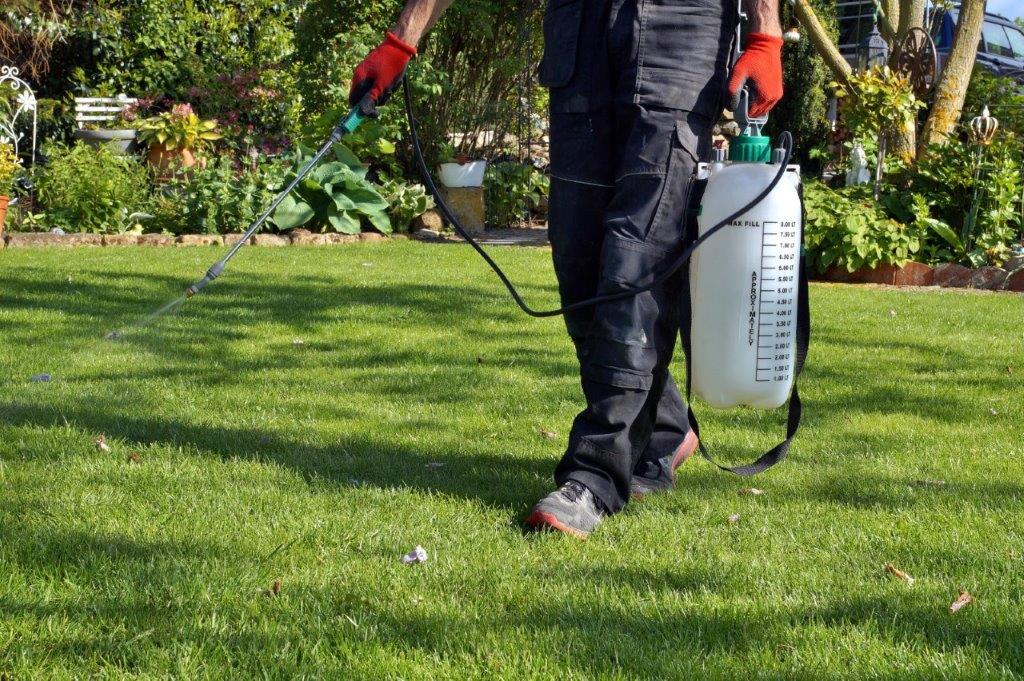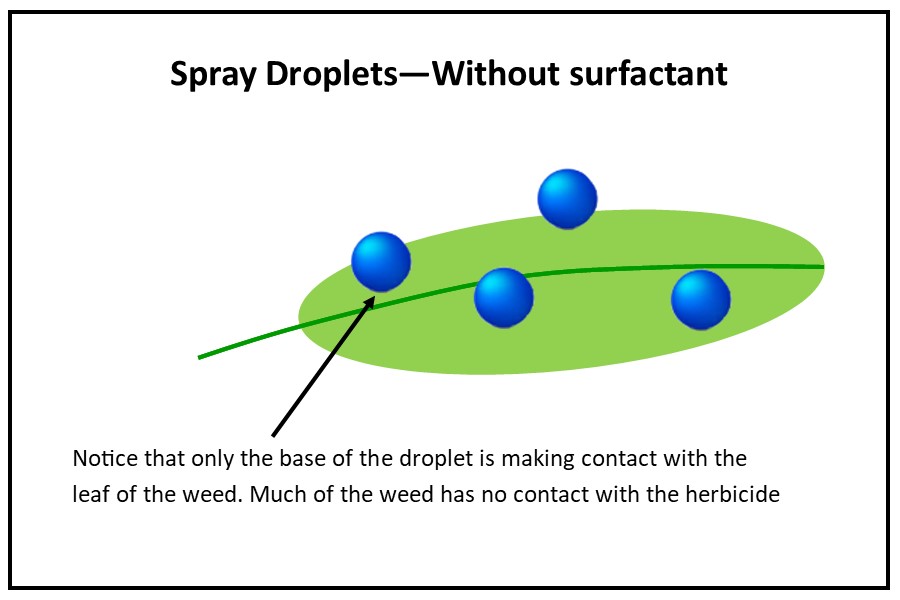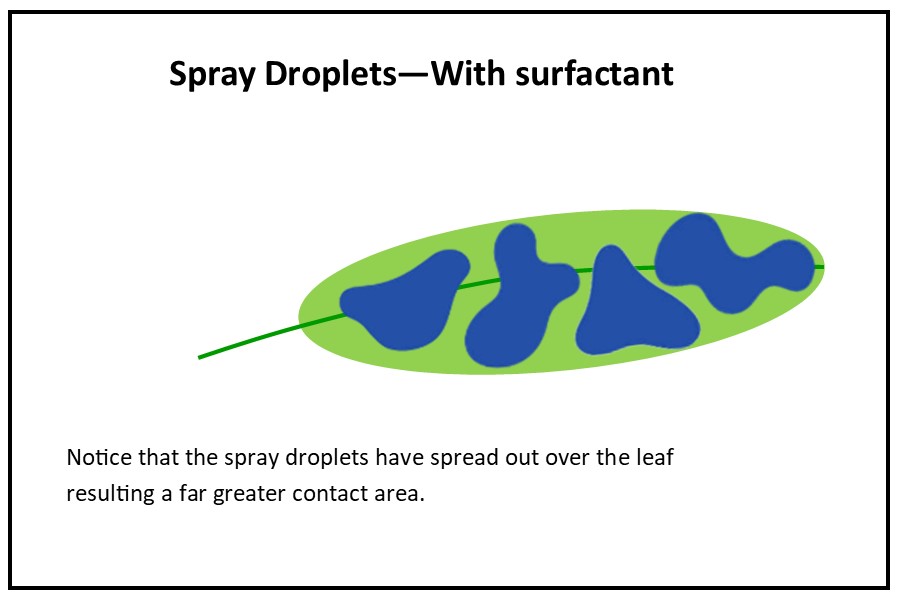Getting the best results from your weed spraying
Author: Stefan Palm Date Posted: 5 September 2023
Customers often ask, “What’s the best product to use?” to selectively kill weeds in a lawn. It’s a good question, and there are quite a few options. The question rarely asked is, “What steps do I take to ensure consistent, effective and safe results?
The second question is, in many ways, an essential one. While finding a herbicide with the right ingredients to selectively knock out weeds in lawns is relatively easy, any home gardener will attest that spraying efforts can be hit and miss. What seems like you using the same product in the same way can have mixed results. Sometimes, there may be no results at all, and at other times, it can not only kill the weeds but also discolour your lawn! 
There are many factors that determine how successful your efforts are. Random results are not so much a result of the efficacy of the herbicide but rather a bunch of other factors that can play havoc with how well they work. So what can you do to make sure that you get predictable results each time you spray while at the same time being careful to protect yourself and the environment?
Choose the correct herbicide.
There are many herbicides that will selectively control weeds in lawns. The one you choose depends on the type of lawn you are spraying and the weeds in it. Typically, there are selective herbicides for winter grasses, summer grasses and broadleaf weeds. For example, if you choose a broadleaf herbicide and are targeting winter grass, you won’t get the results you are looking for. When purchasing a herbicide, go prepared by knowing the weed you’re targeting. Look for the weed on the label of the herbicide you buy. Alternatively, take a sample of the weed with you or do some online research so that you can have it identified before purchasing. Ensure that the chemical you buy is suitable for the lawn you have. For example, some selective herbicides are not suitable for buffalo lawns. If you apply a weed and feed type product (containing dicamba) on a buffalo lawn, you’ll most likely kill it.
Read the instructions
It is critical to thoroughly read the instructions of the chemical you intend to use before you open and use it. Instructions are printed on the packaging. While this may take some time, it will give you a much better chance of success. The label will tell you exactly how much chemical to mix, how much water to mix it with and how much lawn area that mix should cover. All these factors are critical when applying chemicals to your lawn. I often hear stories of people who have mixed “a little extra” herbicide into the batch, thinking this will give better results. Nothing could be further from the truth. My advice is to follow the instructions to the letter. The label will also provide you with advice on:
- What safety gear to use: e.g., gloves and goggles, etc
- What to do if you ingest any herbicide or experience some skin contact
- Things to avoid. For example, some chemicals should be kept away from waterways
Use a wetter and spreader
Always apply a Wetter and Spreader (sometimes known as a surfactant) when spraying herbicides onto your lawn. Applying a wetter and spreader breaks down the surface tension of the droplets that come out of the sprayer. This ensures a more even and complete coverage over the weed, ensuring better results. They also help the chemical to stick onto the weed. This is a critical step for tough weeds like creeping oxalis and clover. Without a surfactant in your sprayer mix, when the herbicide spray droplets make contact with the leaves of the weeds, they remain as a droplet. The droplet’s surface tension ensures that only the very bottom of it makes contact with the leaf, as demonstrated in the illustration below. This is the same concept as how you would expect water to bead up when applied to a freshly waxed car.
the droplets that come out of the sprayer. This ensures a more even and complete coverage over the weed, ensuring better results. They also help the chemical to stick onto the weed. This is a critical step for tough weeds like creeping oxalis and clover. Without a surfactant in your sprayer mix, when the herbicide spray droplets make contact with the leaves of the weeds, they remain as a droplet. The droplet’s surface tension ensures that only the very bottom of it makes contact with the leaf, as demonstrated in the illustration below. This is the same concept as how you would expect water to bead up when applied to a freshly waxed car.
This is not ideal, as most of the blade surface has no contact with the herbicide. This phenomenon is made worse by some plants’ inbuilt defence mechanisms. Some plants have waxy surfaces, and others have hairy surfaces, further reducing the amount of herbicide making contact with the leaf. For a herbicide to work effectively, a substantial amount must cover the leaf’s surface so the plant can draw it in.
Surfactants are the answer to this problem and will supercharge your spraying efforts. A surfactant (or wetting agent) can be added to your spray mix and will reduce the spray droplets’ surface tension. This makes the herbicide spread out over the leaf’s surface area, allowing it to penetrate the leaf more effectively, resulting in a better kill, as shown in the illustration below.
surface tension. This makes the herbicide spread out over the leaf’s surface area, allowing it to penetrate the leaf more effectively, resulting in a better kill, as shown in the illustration below.
Choose the right weather conditions.
Some chemicals will not work if exposed to dew, rain or water directly after application. It is also advisable not to spray in windy conditions to avoid off-target damage or spray drift onto nearby plants. In some instances, warmer weather provides more favourable conditions than cold weather for best results.
Have the right spray equipment at hand.
Good quality spray equipment is critical for best results. The most common type of home spray equipment is a hand pump pressure sprayer. Most people have had experience with one of these at some point in their gardening career. The only issue with these types of sprayers is that they have inconsistent spray pressure. When freshly pumped up, they spray at higher volumes due to the higher pressure. As the pressure depletes in the course of spraying, the spray volume gets less and less until you have to pump the sprayer up again. While this type of sprayer will do the job, there is a range of rechargeable battery sprayers that have come onto the market in recent years. They come in various sizes but, more importantly, spray at constant pressure, giving a much more consistent result. I can recommend Solo battery sprayers. They aren’t cheap, but they are a quality unit that does a great job.
Don’t spot spray.
I would recommend cover-spraying your whole lawn rather than spot-spraying. Spot-spraying can lead to applying too much chemical on each weed (which can burn the lawn), and it can lead to missing some weeds you don’t notice. Often, creeping weeds spread out over a large area, and it’s easy to miss parts of the weed if you’re spot spraying, leaving the missed parts to continue on their merry way.
Don’t mix chemicals together.
Sometimes, you’ll have more than one type of weed to attack, which may require different types of chemicals. Never mix and apply multiple types of chemicals together in the same sprayer. Always spray separately and leave at least seven days between applications when switching chemicals.
Be prepared to spray more than once.
If you have had weeds in your lawn for a while or if you have a significant infestation, you’ll most likely have to spray regularly to get rid of them. Don’t be surprised to see weeds persist beyond your initial spray or to see new flushes of weeds germinate. Vigilance is the key here – Keep spraying as required. Some weeds, such as creeping oxalis will need to be sprayed every 2-3 weeks for an entire season to achieve control. Be patient. Some weeds die quickly, and others take a while. In some instances, weeds can carry on as normal for up to two weeks after spraying before they start to die.
While all of this sounds like a lot to take in, it’s well worth spending some time doing your homework before you start. In this way, you’ll have much better results, be safer in your approach, and avoid unintended damage to lawns and gardens.
